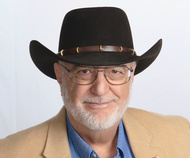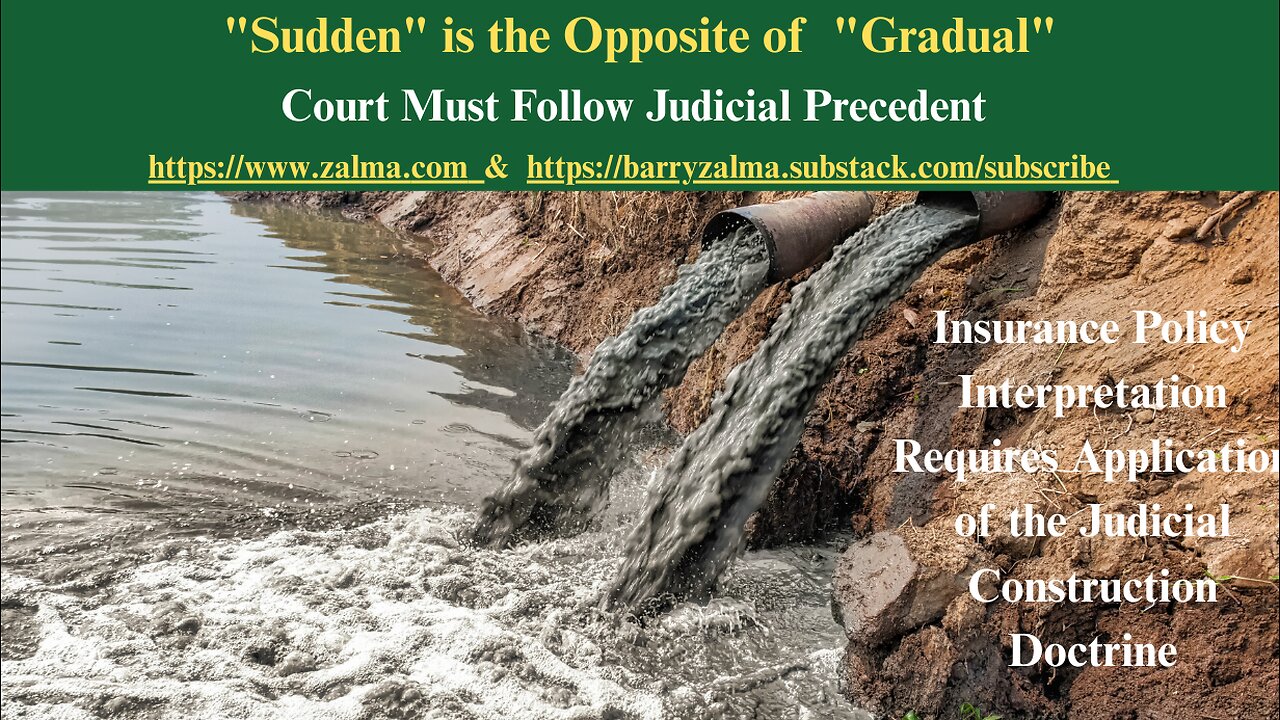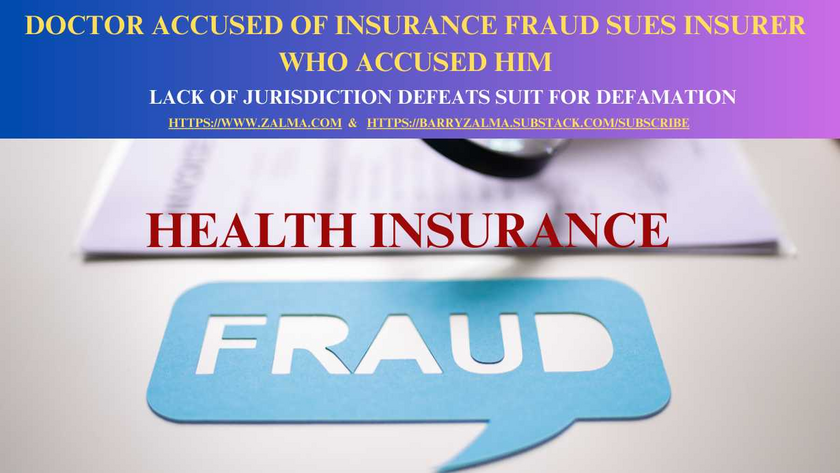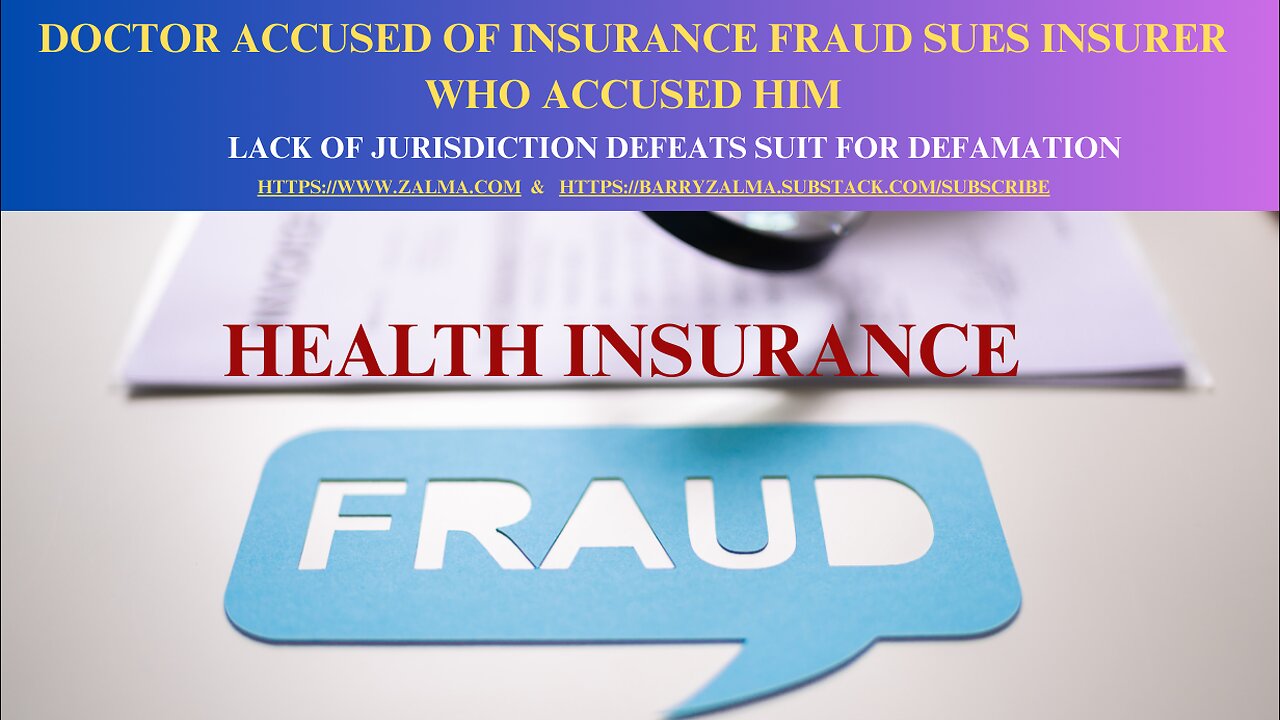
No Good Deed Goes Unpunished
Read the full article at https://lnkd.in/gRdjs-S6 and see the full video at https://lnkd.in/gTHtBnrJ and at https://lnkd.in/guV9yUzN and at
https://zalma.com/blog plus more than 4400 posts.
GEICO Advantage Insurance Company and GEICO Choice Insurance Company (collectively “GEICO”) appealed a decision of the Circuit Court of the City of Richmond granting summary judgment to Liosha Miles (“Miles”) on the issue of whether each of the two insurance policies at issue provided separate tranches of insurance for uninsured motorist (“UM”) coverage and underinsured motorist (“UIM”) coverage. GEICO contended that the statute and each of the applicable policies provide only a single tranche of coverage applicable to both UM and UIM claims.
In GEICO Advantage Insurance Company And GEICO Choice Insurance Company v. Liosha Miles, No. 220004, Supreme Court of Virginia (December 1, 2022) the Supreme Court interpreted the statute and the policies wording.
BACKGROUND
On April 18, 2019, Miles sustained extensive personal injuries in a single automobile accident caused by the negligence of two different drivers. One driver, Carlos Figuero, was insured under an automobile insurance policy issued by Integon General Insurance Company (“Integon”) with a liability limit of $25,000. The second driver (“Doe”) did not stop at the scene of the accident and was never identified, and thus, is considered an uninsured motorist pursuant to Code § 38.2-2206(B).
At the time of the accident, Miles was insured under two policies: she was the named insured under a GEICO Advantage policy covering her vehicle and also was a covered insured under her brother’s GEICO Choice policy by virtue of her being a “resident relative” of the named insured.
Each of the GEICO policies contained UM/UIM coverage with bodily injury limits of $50,000 per person and $100,000 per occurrence. GEICO concedes that Miles’ injuries from the accident resulted in damages that exceeded all available insurance coverage, “no matter how that is calculated.” On behalf of Figuero, Integon tendered its policy limit of $25,000.
The two GEICO policies paid, quickly, what they believed in good faith, was the limits of liability of the policies.
Claiming a $25,000 credit as a result of Integon’s tender, GEICO Advantage tendered $25,000 related to Miles’ claim against Figuero.
GEICO Advantage also tendered an additional $25,000 related to Miles’ claim against Doe, the unknown, and hence, uninsured motorist. Thus, GEICO Advantage tendered a total of $50,000 as a result of Miles’ UM/UIM claims.
As a result of these tenders, GEICO Advantage asserted that it had exhausted the limits of its policy’s UM/UIM coverage.
Separately, GEICO Choice tendered $50,000 to Miles related to her claim against Figuero. GEICO Choice made no tender related to Miles’ claim against Doe. As a result of its good faith tender of its limits, GEICO Choice asserted that it had exhausted the limits of its policy’s UM/UIM coverage.
Miles asserted that neither GEICO entity had exhausted its limits of UM/UIM coverage. Contending that each policy provided both a $50,000 limit for UM claims and another $50,000 limit for UIM claims entitling her to an additional $50,000.
Miles sued seeking a declaration that each policy contained separate $50,000 limits for UM and UIM coverage. GEICO countered asserting that each policy provided a single $50,000 limit for both UM and UIM claims. The circuit court granted Miles’ motion for summary judgment and denied GEICO’s cross-motion.
ANALYSIS
Addressing questions of statutory interpretation, the Supreme Court’s primary objective is to ascertain and give effect to legislative intent, as expressed by the language used in the statute.
Code § 38.2-2206(A)
The parties agree that the dispositive question in this appeal is whether Virginia law requires an insurance company to provide separate UM and UIM coverage in an automobile liability policy or if the UIM coverage is properly understood as a component part of the UM coverage.
Affording the words chosen by the General Assembly their plain and ordinary meanings the Supreme Court concluded that UIM coverage is a constituent part of UM coverage and does not represent a separate tranche of available coverage when UM coverage has been exhausted.
The fact that the statute requires one endorsement for both UM and UIM incidents provides a sufficient basis to conclude that UIM coverage is a constituent part of the UM endorsement, and thus, is not a separate tranche of insurance. Any residual doubt is extinguished by the language regarding the limits of coverage available under the endorsement required by Code § 38.2-2206(A). The third sentence of the statute sets coverage limits for the endorsement required by the first sentence of the statute, providing that such “limits shall equal but not exceed the limits of the liability insurance provided by the policy, unless any one named insured rejects the additional uninsured motorist insurance coverage[.]” Code § 38.2-2206(A).
This language reflects a policy decision by the General Assembly to afford insured drivers some measure of protection against injuries caused by the acts of others, but to limit that protection to no more in insurance coverage than the insured driver has elected to provide for the benefit of others who may be injured by the acts of the uninsured or underinsured driver.
A cap on UM coverage with no corresponding cap on UIM coverage-would represent an anomaly bordering on an absurdity. Although the conclusion was compelled by the words of the statute, the Supreme Court noted that it also was consistent with its prior cases addressing the UM/UIM statute.
The circuit court’s interpretation of the statute not only fails to address the evil sought to be corrected by the legislature it leads to the very anomaly that the 1982 statutory amendment was designed to eliminate. Under the circuit court’s interpretation, Miles would be in a better position from an insurance coverage perspective because she was hit by one underinsured motorist and one uninsured motorist as opposed to two underinsured motorists.
Both the text of the Code § 38.2-2206(A) and prior cases interpreting the statute lead inexorably to the conclusion that UIM coverage is a constituent part of UM coverage. Concluding that the circuit court erred in granting Miles’ motion for summary judgment and denying GEICO’s cross-motion for summary judgment the Supreme Court reversed the judgment of the circuit court and final judgment was entered in favor of GEICO.
ZALMA OPINION
Uninsured and Underinsured Motorist insurance is designed to protect the insured from the danger of being injured by a person who cannot be held liable for the injury because of escaping the scene of the accident or having inadequate insurance to indemnify the injured. Unfortunately, insureds like Ms. Miles, buy only minimal insurance to protect themselves and more to protect others. GEICO, in good faith, paid everything they owed and Miles tried to double the coverage with an imaginative analysis of the UM/UIM coverages that simply failed to comport with the Virginia statute and the policy wording. The good claims handling, because of the severity of her injury, forced GEICO to defend to the state supreme court, it good deeds.
(c) 2022 Barry Zalma & ClaimSchool, Inc.
Subscribe and receive videos limited to subscribers of Excellence in Claims Handling at locals.com https://zalmaoninsurance.locals.com/subscribe.
Go to substack at substack.com/refer/barryzalma Consider subscribing to my publications at substack at substack.com/refer/barryzalma
Barry Zalma, Esq., CFE, now limits his practice to service as an insurance consultant specializing in insurance coverage, insurance claims handling, insurance bad faith and insurance fraud almost equally for insurers and policyholders. He practiced law in California for more than 44 years as an insurance coverage and claims handling lawyer and more than 54 years in the insurance business.
He is available at http://www.zalma.com and [email protected] to Mr. Zalma at [email protected]; http://www.zalma.com; http://zalma.com/blog; daily articles are published at Zalma on Insurance
By Barry Zalma
Go to the podcast Zalma On Insurance at https://anchor.fm/barry-zalma; Follow Mr. Zalma on Twitter at https://twitter.com/bzalma; Go to Barry Zalma videos at Rumble.com at https://rumble.com/c/c-262921; Go to Barry Zalma on YouTube- https://www.youtube.com/channel/UCysiZklEtxZsSF9DfC0Expg; Go to the Insurance Claims Library – https://zalma.com/blog/insurance-claims-library
Montana County Attorney Admits to Insurance Fraud & Is Only Suspended from Practice for 60 Days
Post 5251
Read the full article at https://lnkd.in/gnBaCjmv, see the video at https://lnkd.in/gfpVsyAd and at https://lnkd.in/gC73Nd8z, and at https://zalma.com/blog plus more than 5250 posts.
A Lawyer Who Commits Insurance Fraud and Pleas to a Lower Charge Only Suspended
In The Matter Of: Naomi R. Leisz, Attorney at Law, No. PR 25-0150, Supreme Court of Montana (December 23, 2025) the Montana Office of Disciplinary Counsel (ODC) filed a formal disciplinary complaint with the Commission on Practice (Commission) against Montana attorney Naomi R. Leisz.
On September 25, 2025, Leisz tendered a conditional admission and affidavit of consent. Leisz acknowledged the material facts of the complaint were true and she had violated the Montana Rules of Professional Conduct as alleged by ODC.
ADMISSIONS
Leisz admitted that in April 2022, her minor son was involved in a car accident in which he hit a power pole. Leisz’s son ...
Montana County Attorney Admits to Insurance Fraud & Is Only Suspended from Practice for 60 Days
Post 5251
Read the full article at https://lnkd.in/gnBaCjmv, see the video at https://lnkd.in/gfpVsyAd and at https://lnkd.in/gC73Nd8z, and at https://zalma.com/blog plus more than 5250 posts.
A Lawyer Who Commits Insurance Fraud and Pleas to a Lower Charge Only Suspended
In The Matter Of: Naomi R. Leisz, Attorney at Law, No. PR 25-0150, Supreme Court of Montana (December 23, 2025) the Montana Office of Disciplinary Counsel (ODC) filed a formal disciplinary complaint with the Commission on Practice (Commission) against Montana attorney Naomi R. Leisz.
On September 25, 2025, Leisz tendered a conditional admission and affidavit of consent. Leisz acknowledged the material facts of the complaint were true and she had violated the Montana Rules of Professional Conduct as alleged by ODC.
ADMISSIONS
Leisz admitted that in April 2022, her minor son was involved in a car accident in which he hit a power pole. Leisz’s son ...
Insurer’s Exclusion for Claims of Assault & Battery is Effective
Post 5250
Read the full article at https://lnkd.in/gBzt2vw9, see the video at https://lnkd.in/gEBBE-e6 and at https://lnkd.in/gk7EcVn9, and at https://zalma.com/blog plus more than 5250 posts.
Bar Fight With Security is an Excluded Assault & Battery
In The Cincinnati Specialty Underwriters Insurance Company v. Mainline Private Security, LLC, et al., Civil Action No. 24-3871, United States District Court, E.D. Pennsylvania (December 16, 2025) two violent attacks occurred in Philadelphia involving young men, Eric Pope (who died) and Rishabh Abhyankar (who suffered catastrophic injuries). Both incidents involved security guards provided by Mainline Private Security, LLC (“Mainline”) at local bars. The estates of the victims sued the attackers, the bars, and Mainline for negligence and assault/battery. The insurer exhausted a special limit and then denied defense or indemnity to Mainline Private Security.
INSURANCE COVERAGE
Mainline had purchased a commercial ...
Court Must Follow Judicial Precedent
Post 5252
Read the full article at https://www.linkedin.com/pulse/sudden-opposite-gradual-barry-zalma-esq-cfe-h7qmc, see the video at and at and at https://zalma.com/blog plus more than 5250 posts.
Insurance Policy Interpretation Requires Application of the Judicial Construction Doctrine
In Montrose Chemical Corporation Of California v. The Superior Court Of Los Angeles County, Canadian Universal Insurance Company, Inc., et al., B335073, Court of Appeal, 337 Cal.Rptr.3d 222 (9/30/2025) the Court of Appeal refused to allow extrinsic evidence to interpret the word “sudden” in qualified pollution exclusions (QPEs) as including gradual but unexpected pollution. The court held that, under controlling California appellate precedent, the term “sudden” in these standard-form exclusions unambiguously includes a temporal element (abruptness) and cannot reasonably be construed to mean ...


Lack of Jurisdiction Defeats Suit for Defamation
Post 5250
Posted on December 29, 2025 by Barry Zalma
See the video at and at
He Who Represents Himself in a Lawsuit has a Fool for a Client
In Pankaj Merchia v. United Healthcare Services, Inc., Civil Action No. 24-2700 (RC), United States District Court, District of Columbia (December 22, 2025)
FACTUAL BACKGROUND
Parties & Claims:
The plaintiff, Pankaj Merchia, is a physician, scientist, engineer, and entrepreneur, proceeding pro se. Merchia sued United Healthcare Services, Inc., a Minnesota-based medical insurance company, for defamation and related claims. The core allegation is that United Healthcare falsely accused Merchia of healthcare fraud, which led to his indictment and arrest in Massachusetts, causing reputational and business harm in the District of Columbia and nationwide.
Underlying Events:
The alleged defamation occurred when United ...


Zalma’s Insurance Fraud Letter
Read the full article at https://lnkd.in/dG829BF6; see the video at https://lnkd.in/dyCggZMZ and at https://lnkd.in/d6a9QdDd.
ZIFL Volume 29, Issue 24
Subscribe to the e-mail Version of ZIFL, it’s Free! https://visitor.r20.constantcontact.com/manage/optin?v=001Gb86hroKqEYVdo-PWnMUkcitKvwMc3HNWiyrn6jw8ERzpnmgU_oNjTrm1U1YGZ7_ay4AZ7_mCLQBKsXokYWFyD_Xo_zMFYUMovVTCgTAs7liC1eR4LsDBrk2zBNDMBPp7Bq0VeAA-SNvk6xgrgl8dNR0BjCMTm_gE7bAycDEHwRXFAoyVjSABkXPPaG2Jb3SEvkeZXRXPDs%3D
Zalma’s Insurance Fraud Letter (ZIFL) continues its 29th year of publication dedicated to those involved in reducing the effect of insurance fraud. ZIFL is published 24 times a year by ClaimSchool and is written by Barry Zalma. It is provided FREE to anyone who visits the site at http://zalma.com/zalmas-insurance-fraud-letter-2/
Zalma’s Insurance Fraud Letter
Merry Christmas & Happy Hannukah
Read the following Articles from the December 15, 2025 issue:
Read the full 19 page issue of ZIFL at ...













